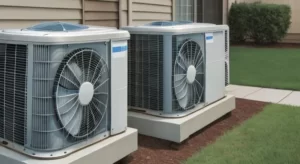
Saving energy at home and while traveling can significantly reduce your utility bills and help protect the environment. Here are some practical tips to help you save energy:
Top Energy-Saving Tips for Home and On the Go
At Home
Lighting
- Turn Off Lights: Always switch off lights when you leave a room.
- LED Light Bulbs: Replace traditional bulbs with energy-efficient LED light bulbs.
- Natural Light: Utilize natural light during the day to reduce the need for artificial lighting.
Heating and Cooling
- Thermostat Settings: Set your thermostat to a lower temperature in winter and a higher temperature in summer.
- Use Fans: Opt for fans instead of air conditioning whenever possible.
- Seal Drafts: Ensure windows and doors are properly sealed to prevent drafts.
- Insulation: Properly insulate your home to maintain temperature.
Appliances and Electronics
- Unplug Devices: Unplug appliances and electronics when not in use.
- Power Strips: Use power strips to easily turn off multiple devices at once.
- Energy-Efficient Appliances: Choose appliances with high energy efficiency ratings.
- Air-Dry Dishes: Skip the dishwasher’s drying cycle and air-dry dishes.
- Cold Water Laundry: Wash clothes in cold water and line-dry them to save energy.
Water
- Shorter Showers: Take shorter showers to reduce water heating costs.
- Fix Leaks: Repair leaky faucets and toilets promptly.
- Water-Efficient Fixtures: Install water-efficient showerheads and faucet aerators.
- Smart Lawn Watering: Water your lawn less often and during cooler parts of the day.
Cooking
- Microwave Over Oven: Use the microwave instead of the oven whenever possible.
- Efficient Cooking: Cook multiple dishes simultaneously to maximize oven use.
- Lid On Pots: Keep lids on pots and pans to cook more efficiently.
- Thaw in Fridge: Thaw frozen foods in the refrigerator rather than using the microwave.
On the Go
Transportation
- Walk or Bike: Choose walking or biking over driving for short trips.
- Public Transport: Use public transportation to reduce your carbon footprint.
- Carpool: Carpool or combine errands to minimize the number of trips.
- Car Maintenance: Keep your car well-maintained to improve fuel efficiency.
- Drive Steadily: Maintain a steady speed and avoid aggressive driving to save fuel.
By integrating these small changes into your daily routine, you can make a significant impact on your energy consumption and save money on your utility bills. Additionally, these efforts contribute to reducing greenhouse gas emissions, thereby helping to protect our planet.
Human activities are the primary drivers of global warming, mainly through the release of greenhouse gases into the atmosphere. Here’s how we contribute to this critical issue:
How Human Activities Drive Global Warming
Burning Fossil Fuels
- Electricity Production: Burning coal, oil, and natural gas for electricity generates significant carbon dioxide (CO2) emissions, the most impactful greenhouse gas.
- Transportation: Cars, trucks, ships, and airplanes running on fossil fuels release large amounts of CO2 and other pollutants.
Deforestation
- Reduced Absorption: Trees absorb CO2 from the atmosphere. Cutting down forests decreases this capacity and releases stored carbon back into the air.
Agriculture
- Livestock Farming: Livestock farming emits methane (CH4), a potent greenhouse gas.
- Fertilizers: The use of nitrogen-rich fertilizers releases nitrous oxide (N2O), another powerful greenhouse gas.
Industrial Processes
- Cement Production: Cement manufacturing and other industrial processes emit substantial amounts of greenhouse gases.
- Chemical Manufacturing: The production of various chemicals also releases significant greenhouse gases.
Waste Management
- Landfills: Decomposing organic waste in landfills produces methane, contributing to greenhouse gas emissions.
Consumption Patterns
- High Carbon Footprint Products: Purchasing products with high carbon footprints adds to overall emissions.
- Food Waste: Wasting food leads to emissions throughout the supply chain, from production to disposal.
While these are the primary ways humans contribute to global warming, the extent of our impact varies based on individual choices and regional practices. Understanding these contributions is crucial for developing effective strategies to mitigate climate change.
Final Words:
Save energy, save money, and protect the planet. By making simple changes in our daily lives and adopting energy-efficient practices, we can significantly reduce our carbon footprint and contribute to the fight against global warming.
Keep your home safe with the EZVIZ C6N Smart Home Security Camera! Enjoy full HD 1080P, 360° coverage, and night vision for ultimate peace of mind. Now at an unbeatable price! Shop now on Noon










